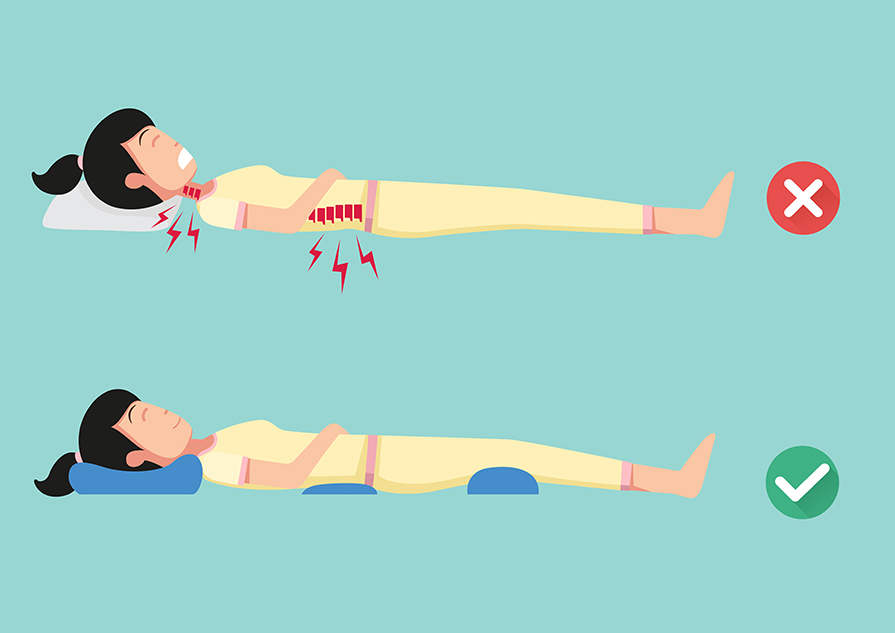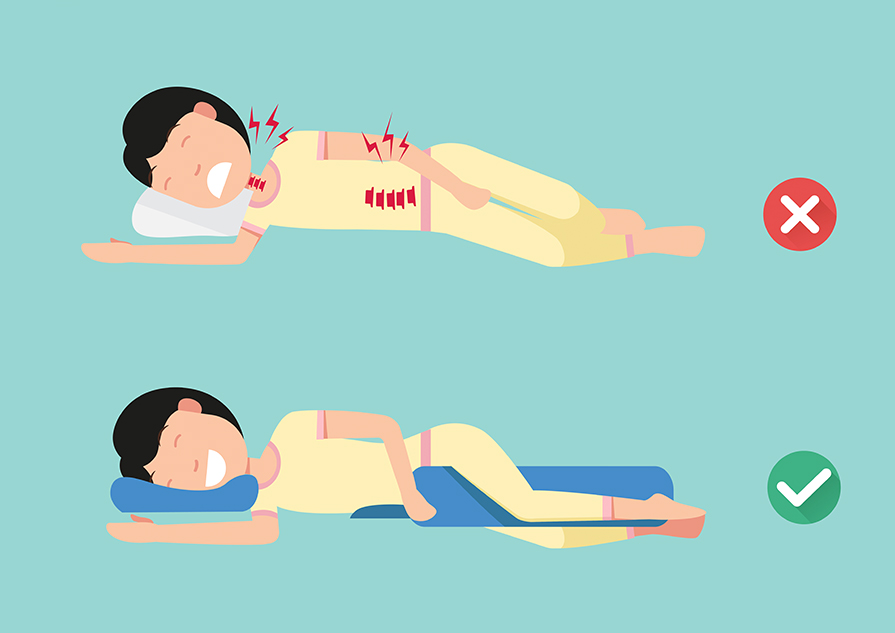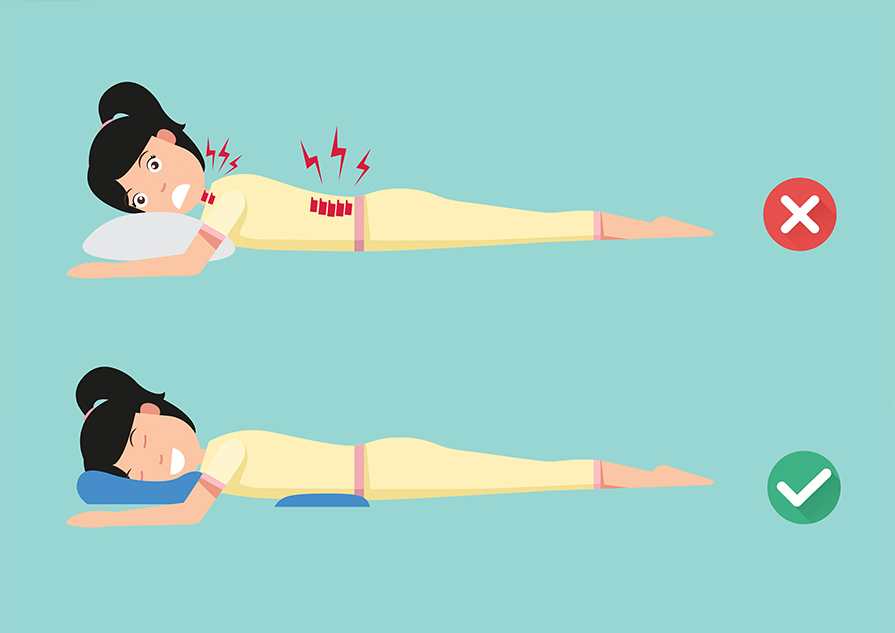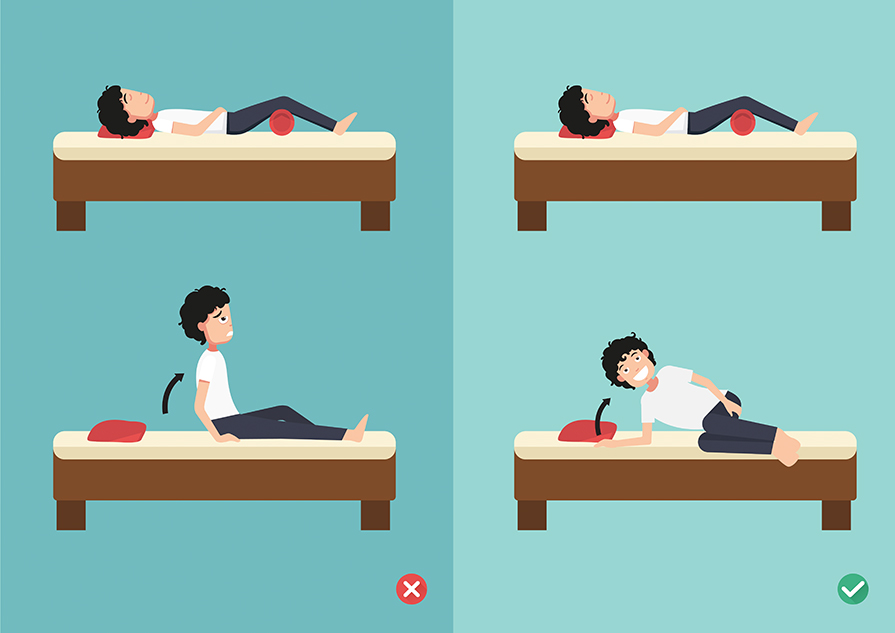
About This Blog:
- Did you know certain sleeping positions can exacerbate back pain? Or that, on the contrary, there are sleeping positions that can ease the strain of an aching back?
- March is National Sleep Awareness Month, an educational campaign that promotes the importance of sleep, and Dr. Mark Giovanini of NeuroMicroSpine is sharing suggested sleeping positions for after spine surgery as well as what positions may or may not be most beneficial for low back pain.
- Keep reading for some of our recommendations!
Generally speaking, the first few days after spine surgery are going to be a little difficult. You may feel fatigued at times, have some level of pain, and trouble doing normal activities like walking, showering, and sleeping. Nevertheless, Dr. Mark Giovanini is dedicated to making you feel as comfortable as possible on your road to recovery.
Sleeping Statistics
That said, he understands patients often prefer some sleeping positions over others for the most comfortable sleep. Furthermore, Dr. Giovanini knows there are many factors that go into a good night's sleep. Here are a few sleep statistics, compliments of the American Sleep Association:
- Roughly 50-70 million adults in the U.S. suffer from a sleep disorder.
- Insomnia is the most common sleep disorder, affecting nearly 30% of American adults.
- 35.3% adults report less than 7 hours of sleep a night.
- Drowsy driving is responsible for 1,550 fatalities and 40,000 nonfatal injuries in the United States each year.
Now, back to specific sleeping positions. If, after surgery, you're wondering what the best sleeping position is for recovery, we'll tell you. It's sleeping on your back. This sleeping position offers the most support and protection to patients healing from spinal surgery. If you can't get a comfortable night's sleep on your back, there may be another option for you. Continue reading to learn more:
Sleeping On Your Back
When it comes to sleep, the best way to reduce pain and your risk of developing a post-procedural complication is to sleep on your back with a pillow placed under your knees. This provides the cervical and thoracic spine with much-needed support, which may ease your post-surgery pain. It’s also important to keep your arms at your sides, if possible. Having your arms under or over your neck or head can put pressure on your shoulders and neck, causing damage. If an incision was made around the cervical spine (neck), you may be required to wear your cervical collar to bed or use an orthopedic pillow to reduce excessive movement. Additionally, it may help to either sleep on a recliner (reclined sofa/chair) or place a pillow under your low back and shoulders for added support and protection.

Sleeping On Your Side
Stomach-sleepers, we’re sorry, but your ideal sleeping position is not recommended after surgery. However, stomach-sleepers may breathe a sign of relief knowing sleeping on the side is permitted. Much like sleeping on the back, side-sleepers must use pillows to protect their spine. Placing a pillow between the knees can help side-sleepers achieve cervical support. If you wish to change positions throughout the night, try to “log roll” into the new position so your whole body is moving, not just your torso, to prevent a twisting motion. It's obvious why twisting like you normally would is dangerous -- it puts your spine at risk of further injury or damage.

Sleeping On Your Stomach
While stomach sleeping is not usually permitted or recommended for patients recovering from surgery, unfortunately, there's no stopping someone with chronic pain from sleeping in this position. If you must sleep on your stomach, consider a few things: 1) you'll need two pillows for added support and 2) your neck will become vulnerable to damage regardless of what you do to help your back pain. For stomach sleepers, it's important to place one pillow under the pelvis/hips and another flatter pillow under the chest. This will help lift the neck to reduce as much strain as possible, and it'll reduce the pressure on your low back.

Getting Out Of Bed
In addition to moving into a new position, log-rolling can also help you get out of bed. Log roll to either the left or right side of your bed, then use your opposite arm to prop yourself up. Once you’re at the edge, you can lower your legs and push yourself up into a standing position.
For back pain, in general, sleeping on your back with a pillow under your knees may ease discomfort. Sleeping in a recliner or adjustable bed may also provide some pain relief for the low back. If you’d like more information on recommended sleeping positions for back pain or after surgery, talk to Dr. Mark Giovanini at NeuroMicroSpine during your appointment!

For more information on minimally invasive spine surgery or to make an appointment with Dr. Giovanini, please call (850) 934-7545 or visit http://www.neuromicrospine.com/request-appointment.
We hope to see you soon!
The advice and information contained in this article is for educational purposes only and is not intended to replace or counter a physician’s advice or judgment. Please always consult your physician before taking any advice learned here or in any other educational medical material.
